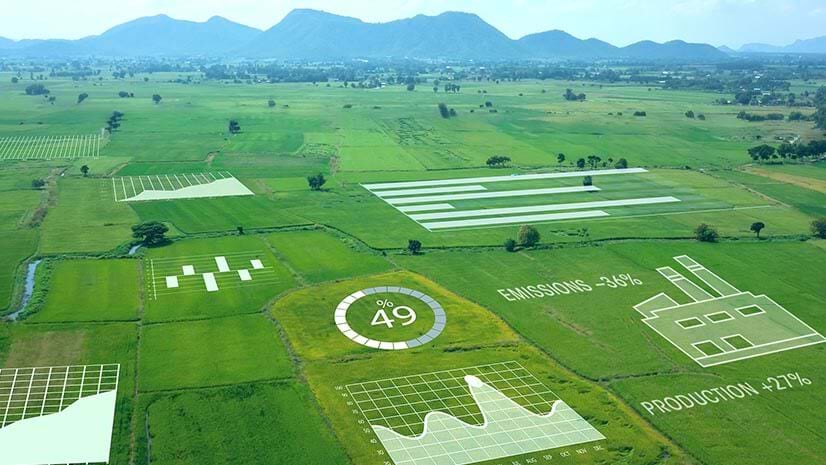Once relegated to the back offices of IT, CIOs today are valuable advisers to the enterprise. With IT departments morphing from cost centers to profit drivers, Gartner predicts that by 2025, 80 percent of CIOs will be judged on their ability to contribute to revenue growth.
In adapting to these new expectations, corporate tech leaders can glean valuable insights from their public sector counterparts, particularly those who have used enterprise software to support the growth of cities and counties.
Before his retirement in 2024, Keith Durbin served as CIO of the Metropolitan Government of Nashville and Davidson County (Metro for short) at a time when Music City was expanding from a state capital known for its honky-tonks to a booming metropolis now ranked second in the nation for GDP growth. The lessons he learned could prove instructive to a CIO supporting a business’s growth strategy.
After coming aboard in 2009, Durbin recognized that an enterprise approach to software would be necessary to keep pace with Nashville’s evolution. Since the 1980s, Metro had employed geographic information system (GIS) technology in the planning department to map and analyze land parcels. Durbin and his team saw that by extending GIS tools, applications, and maps, the city’s departments could strengthen data-sharing and collaboration and better support Nashville’s growth.
“An enterprise approach lets you create strategic alignment across the organization,” said Durbin at a recent CIO summit. “[The] scope is much broader.”
Lesson 1: Treat Enterprise Software as a Shared Service
As a business expands, enterprise technology must mature with it. Centralizing support and administration of software such as GIS helps deliver value throughout the organization.
To ease the transition of GIS from Metro’s planning department into its Information Technology Services (ITS), Durbin and the planning director drafted a memorandum of understanding. The agreement included a guarantee that stakeholders in planning would continue to receive the same level of service.
Demonstrating the business value of a shared service model can often help persuade stakeholders. For instance, Metro’s ITS team emphasized the cost savings produced by streamlining contracts and vendors. The enterprise strategy earned executive buy-in from the city’s mayor.
In the private sector, a major energy company also created significant returns by turning GIS into an enterprise software platform—including faster time to value, accelerated collaboration, and a virtuous cycle for location data.

GIS has really set the stage for the growth of Nashville, and as an enterprise solution we will continue to look for opportunities to leverage GIS tools.
Lesson 2: Build a Process for Governance and Architecture
As development in Nashville soared, Metro’s leaders realized that a lack of data-sharing was impeding progress.
“What we lacked was that truly expandable architecture that was necessary to grow our GIS program at the enterprise scale,” said Colleen Herndon, Metro’s assistant ITS director.

To widen access to location data, the ITS team developed a system architecture for GIS, diagramming the connections among users, software, and hardware. The architecture highlighted the need for governance—a system to ensure that the platform could be an authoritative source of location data.
Durbin and his team created multiple portals to access information. A central store of GIS data held most of the content that users interacted with, including zoning information, topographical maps, voting districts, and more. Separate portals for the police, water department, and health and fire services housed domain-sensitive information.
Private sector CIOs can prioritize architecture and governance in enterprise road maps to help organizations hit growth goals. For instance, an airport in Ireland that sees up to 100,000 travelers a day uses an enterprise GIS platform to keep data secure while allowing thousands of users, including contractors, to access information.
Lesson 3: Empower Your Stakeholders
Durbin emphasizes the importance of culture in establishing successful enterprise software. By fostering an atmosphere of education and empowerment, more Metro employees and residents could actively leverage location insights.
The ITS team increased GIS fluency by helping onboard departmental users to new portals, creating a GIS users’ group—even preparing job descriptions and sitting in on hiring interviews. These efforts fed the development of community-focused maps and tools, including a dashboard showing tornado damage and a story-based map chronicling heat mitigation efforts.
A similar dynamic occurred at a global commercial real estate firm, where the spread of self-serve maps across departments gave agents the power to analyze properties and drive business.
In the public and private sectors, growing organizations need all the support they can get. Enterprise GIS software integrates location-rich data and insights across all levels—from the C-suite, to departmental teams, to field-based staff, helping rising companies stay on track.
Watch the video of Keith Durbin and Colleen Herndon’s full presentation.











